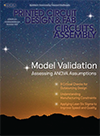Material Gains
 The switch to renewables is about energy security and climate change.
The switch to renewables is about energy security and climate change.
While climate change is obviously the big-picture issue in the global drive to decarbonize, energy security is an important aspect that is shaping governments’ policies worldwide. From either perspective – strategic or environmental – Europe and the US are far behind China in the race to adopt renewables. China reported installing 198GW of solar capacity between January and May. Effectively, that’s the equivalent of adding 100 panels every second!
 Growth in the consumer sector is a reason for us to celebrate and a signal for us to change.
Growth in the consumer sector is a reason for us to celebrate and a signal for us to change.
The consumer sector is arguably the most powerful aspect of today’s immense electronics industry, influencing our quality of life and our perception of it. The standards of functionality, appearance and quality are far above the norms of just a few years ago, and many of us own far more of these luxuriant items than previous generations could have dreamed.
 Technology that keeps us moving naturally is the juice for better living.
Technology that keeps us moving naturally is the juice for better living.
Wearable technology and robotics have brought many exciting and helpful innovations to our work and lives. Yet the most exciting developments – adaptive and protective clothes made from smart fabrics, the witty humanoid home concierge – remain more science fiction than science. Bringing the two together, however, offers an exciting way forward that’s ready to explore right now.
 Everything is changing in high-performance substrates, from materials technology to engineering priorities.
Everything is changing in high-performance substrates, from materials technology to engineering priorities.
Materials science is a quiet contributor to high-performance electronics, playing a huge yet mostly unseen role, enabling everything from smartphones and automotive systems to 5G radio access, communication infrastructures and high-performance computing systems. That conventional-looking circuit board, which the user may never see or think about, is anything but ordinary underneath. While ICs sit serenely on the surface, the processes going on inside couldn’t happen without the engineering that created the substrate beneath. Demand for improvement is ever-present, and many avenues may be explored in search of a solution.
 It might be time for a 50-year-old concept to catch on in PCB fabrication.
It might be time for a 50-year-old concept to catch on in PCB fabrication.
Back in 1978, at the first Printed Circuit World Convention in London, the proceedings described a novel additive technique for producing printed circuit boards on epoxy glass-based laminate. It was a complete contrast to the subtractive approach that was typical at the time and still dominates today. Now, as we strive to achieve ever finer circuit geometries, and sustainability of manufacturing processes has become a prime concern, additive processes could offer a way forward.
Among the most intriguing applications I’ve seen, 3-D printing of twisted-pair interconnects is unlikely to be adopted as a high-volume manufacturing technique but could prove extremely useful for maintenance and repair.
 But can they handle tomorrow’s latency-critical applications?
But can they handle tomorrow’s latency-critical applications?
From the first mobile phones and the Internet to smartphones and the mobile Internet, technical innovation has quickly expanded opportunities for people to communicate. This expansion has driven a relentless and rapid rise in the volume of traffic traveling across the networks that connect us. While the human will to communicate is at the heart of the tremendous success of these tools, the quest to satisfy this apparently insatiable desire places great importance on effectively maximizing network performance and utilization.
Press Releases
- Sharpen Your ESD Skills: CE3S Announces Desco’s First ANSI/ESD S20.20 Training Series for 2026
- Mycronic Secures Turnkey Solution Order from a Nordic Defense Actor
- Altus Partners with Sellectronics to Enhance Manufacturing Capabilities with PVA Delta 8 System
- ITW EAE Celebrates Major Milestone in Domestic Manufacturing Expansion


